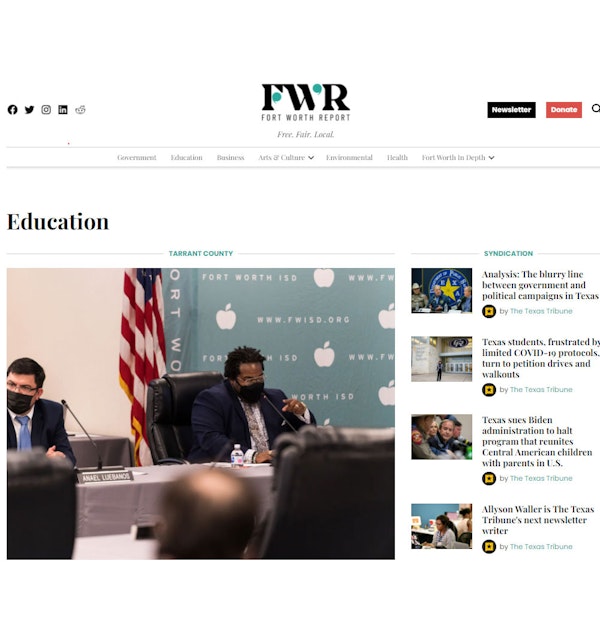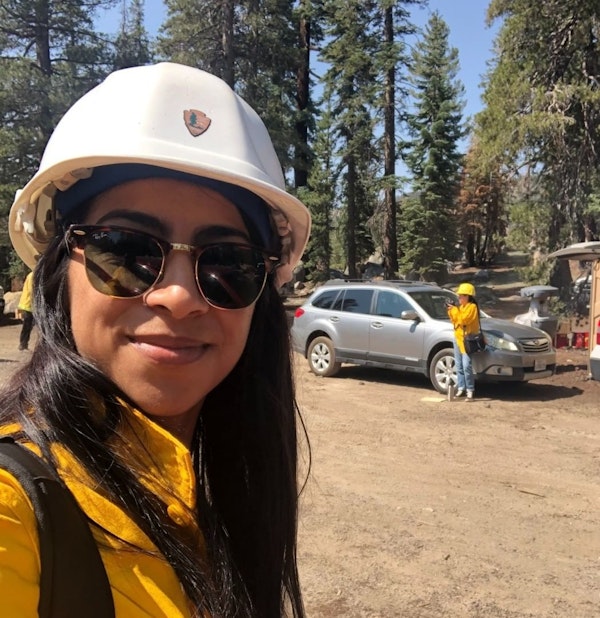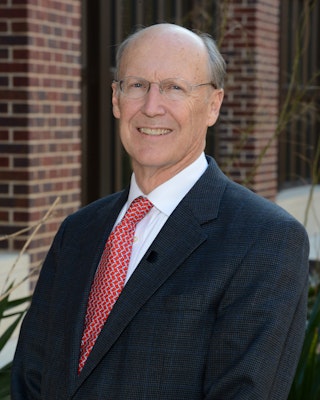Strong Local Newspapers Are a Key to Strengthening Our Democracy
Journalism has faced multiple disruptions over the years, from online marketplaces replacing classified sections, far-off companies focusing more on the bottom line than on reporting, and social media spreading news faster than ever before. But the need for quality journalism to hold leaders to account is as important as ever.

What we know with absolute clarity is that a reliable flow of information is crucial to the stability of a democracy. What we don’t know for sure is whether local newspapers in the United States will have the financial staying power to continue providing their communities with trustworthy information.
There are plenty of troubling warning signs, more than enough to worry townspeople, journalists, and democracy advocates alike. Yet local newspapers are evolving with new models to suggest that communities across the country still can receive information that has been well-sourced, fact-checked, and revealing about their towns, states, country, and world.
Why we should worry
First, some of the troubling signs:
- Between 2004 and today, about 2,200 newspapers have closed across the United States. That loss reflects a quarter of America’s newspapers.
- Since the COVID-19 pandemic took off in 2020, at least 80 newspapers have stopped operating.
- Half of America’s counties have just one local news source. And no newspaper exists in 200 of our 3,000-plus counties.
- The nation now has 50 percent fewer newspaper journalists than it did in 2008.
The list of worrisome signs continues: Hedge funds are buying venerable news organizations like the Pulitzer Prize-winning Denver Post, gutting their news operations, and padding their accounts with the savings.
That’s one reason you find journalists in communities like Chicago, Baltimore, and Denver scurrying to find civically minded business leaders who understand the relationship between reliable information and a stable democracy. They hope those leaders buy their newspapers before the hedge fund operators — or large chains — gobble them up.
To be sure, local newspapers faced major problems before the hedge fund crowd or mega-chains scooped them up. In the early 2000s, Craigslist began giving Americans a new way to buy and sell goods without having to rely upon newspapers’ classified advertising sections. Those sections took a big revenue hit. Soon, daily news reports shrank, along with the number of journalists to fill those reports.
You certainly are aware of how the internet and social media platforms have changed the news business. On the positive side, new technologies have given consumers instant, direct access to innumerable sources of information. On the negative side, consumers have little reason to pay for traditional news reporting if they can get information free off the internet and from social media. Of course, there is no guarantee that the information they receive is factual, reliable, and vetted by trained journalists.
That is, assuming there are journalists to vet information. As noted above, journalists are becoming increasingly scarce as news organizations struggle mightily and often unsuccessfully to determine how to compete with entities that provide consumers information — reliable or not — for free. According to the Pew Research Center, the number of newsroom employees at U.S. newsrooms declined from 74,410 people nationwide in 2006 to 30,820 in 2020.
The primary exceptions are organizations with a national or international reach, such as The New York Times, The Wall Street Journal, and The Washington Post. Because of their far-ranging markets, they have the revenues to add staff or expand their news products. Sometimes both.
Across the country, though, fewer eyeballs are probing into whether local and state governments are spending our tax dollars wisely. Fewer feature stories are being written about local people innovatively serving their towns. Fewer editorialists are helping shape a city or state’s agenda.
Across the country, though, fewer eyeballs are probing into whether local and state governments are spending our tax dollars wisely.
Those functions of a strong news operation are essential to a thriving democracy, where reliable reporting and informed commentary keeps people abreast of the life of their community. One of the most compelling statistics about the importance of trustworthy news sources comes from a Pew Research Center study that shows people who closely follow local news actively participate in the life of their communities. In essence, reliable news sources are like the old town square or village green, where locals congregate and shape their communities through debate and discussion.
Emerging models
At the same time that local newspapers are collapsing or under stress, new models are emerging to strengthen local news reporting. In those, we should draw strength and look to for the health of our democracy.
One example is in Dallas, where the new Dallas Media Collaborative is launching this winter to address affordable housing in the nation’s ninth-largest city. “Some issues are so deep in a region that you need to bring together communities,” explains one participant in the collaborative, Jake Batsell, an Associate Professor and the William J. O’Neil Chair in Business Journalism at Southern Methodist University.
As with news collaboratives in cities like Philadelphia and Charlotte, this effort is pooling together the reporting interests and talents of the Dallas Morning News, KERA, D Magazine, the Dallas Free Press, the Dallas Weekly, Al Dia, the Child Poverty Action Lab, Verdigris Ensemble, Advocate Media, Texas Metro News, and student newspapers at SMU and the University of North Texas. (Izzah Zaheer, an SMU senior who has been working with me on this deeper look into local newspapers reports on how university news operations are partnering with local efforts to sustain quality journalism.)
At the same time that local newspapers are collapsing or under stress, new models are emerging to strengthen local news reporting. In those, we should draw strength and look to for the health of our democracy.
Instead of fearing one entity might scoop the other, which is a journalistic mainstay, the partners will independently and together take on the issue of affordable housing for working families. The organizations may run reports on their own sites as well as that of the Dallas Media Collaborative, which just launched as the new year began. But, as the Dallas Morning News reported the participants believe they can best report on this need better together than individually.
And they are doing so with seed money from the Solutions Journalism Network. The latter has helped launch similar efforts in Philadelphia and Charlotte, while also helping fund the Morning News’ enhanced education reporting. (The John S. and James L. Knight Foundation has provided the network money as part of the foundation’s $300 million commitment to rebuild local journalism.)
Collaboratives like these will not answer all of a community’s need for reliable information. Yet they will help provide meaningful journalism that addresses the needs of a city or region. That, after all, is one of the most important ways local news operations strengthen the fabric of a community. When done right, quality reporting and analysis create a shared culture, which is essential to the larger issue of a stable democracy.
On the west side of the Dallas-Fort Worth metroplex, the Fort Worth Report has taken root since last spring to provide hyper-local reporting in a city of 927,000 residents. On any given day, you will find stories about issues like homelessness, the city’s next generation of leadership, and the impact of Fort Worth voters’ decision not to approve a mega-school bond package.
 <span style="font-style: normal">Fort Worth Report</a>
<span style="font-style: normal">Fort Worth Report</a>
The need for the digital operation arose as financial cutbacks to the longstanding Fort Worth Star Telegram, which has experienced several corporate owners, led to fewer reporters covering stories about the city and its government. William Meadows, the Fort Worth businessman who co-founded the Fort Worth Report and who co-chairs the nonprofit news organization’s board of directors, says that “It is extraordinarily important that communities respond to the decline in local journalism. There is a demand for local news.”
The Fort Worth Report has responded to the decline by such projects as investigating the operations of the water authority that serves Fort Worth and its surrounding county. Leadership shakeups ensued, bringing the sort of governmental accountability that communities deserve.
So far, the community is responding. According to Meadows, the startup site drew more than 90,000 page views in the October-November 2021 reporting period. Importantly, about 30 percent of the readers were between ages 18 and 34.
By going nonprofit, the Fort Worth Report doesn’t have to worry about profit margins or far-off corporate decisions. But it does have to fund itself, which is why it constantly seeks funding from philanthropies, foundations, and individuals.
This model is part of the latest “new journalism,” if you will, that entities like the VT Digger in Vermont, Texas Tribune in Austin, and CalMatters in California rely upon to provide in-depth, award-winning journalism in their communities and states. The model is to find talented journalists, some of whom hail from legacy media operations; develop an independent source of funding that has no control over the editorial report; and localize coverage to a town, region, or state.
This is what you see in Colorado, where the Colorado Sun has evolved as the Denver Post experienced deep financial cuts. Here, too, on any given day, you will see investigations into topics like the state of Colorado paying unemployment checks to some dead people, reports about needs like more foster care housing for Colorado youth, and opinion pieces on topics such as controlling the state’s ozone emissions. And, being Colorado, ample stories exist on the digital site about the outdoors life across the state.
The American Journalism Project (AJP) is a catalyst for nonprofit models seeking a sustainable way to provide quality local journalism. Founded by John Thornton, who provided the early seed capital for the trailblazing Texas Tribune, and Elizabeth Green, founder of the education site Chalkbeat, the organization invests capital in potential nonprofit startups with an enterprising model for local journalism or nonprofits that are in their early stages of reporting on a community or region.
AJP’s most recent footprint can be seen in Cleveland, where it is working with local partners and funders to create a nonprofit news organization this year. The intriguing part of this initiative is that residents will be trained to do the reporting and set the priorities of the newsroom. The Cleveland effort seeks to provide original reporting in a city where the Cleveland Plain Dealer has undergone serious layoffs. AJP Chief Executive Officer Sarabeth Berman says the goal is to create sites statewide that connect citizens through the larger Ohio Local News Initiative.
Another creative effort to bolster local journalism is Report for America. Similar to Teach for America, which trains and dispatches young educators to K-12 campuses for two-year stints or more, Report for America prepares young journalists and sends them to news organizations around the country. As one example, the Fort Worth Report recently hired a Report for America journalist to cover issues in the city.
 Report for America corps member Melissa Montalvo, who works with the <span style="font-style:normal">Fresno Bee</span> in California. (via <a href="https://www.instagram.com/p/CYcIpwGM1Ay/">Instagram</a>)
Report for America corps member Melissa Montalvo, who works with the <span style="font-style:normal">Fresno Bee</span> in California. (via <a href="https://www.instagram.com/p/CYcIpwGM1Ay/">Instagram</a>)
What this means for democracy
By no means do these models suggest local newspapers are roaring back. But just as Americans have responded when our democracy previously faced challenges — remember how stateside Americans cut back on using rubber in World War II so our troops would have enough for their vehicles — Americans are thinking creatively about producing and delivering local journalism.
This is good. Strong local journalism bolsters our democracy in several important ways.
The most essential one is that a local source of news helps create a shared culture. We live in a time when all sorts of political, social, and public health issues are tearing away at our notion of community. A respected news operation becomes a place to air grievances, discuss problems, learn about neighbors, celebrate big moments, and define the identity of a community. Not perfectly, but it is a way to strengthen the bonds of a community.
As Berman contends, local news helps build trust. People not only know the issues that are being covered, but they likely know the journalists covering them in their cities. Reporters may be a citizen’s neighbor, cousin, or former schoolmate. Those are among the reasons that readers tend to trust local media more than the national media.
Strong local journalism also strengthens a community by providing a reliable flow of information. “Reliable” is the key word here. Citizens may not like what they are reading. Still, they can know that professional journalists have been trained to hear all sides of a story, search out its truthfulness, focus on accuracy, and, importantly, publish corrections when mistakes are made.
That is different from what we may rip off the internet or pick up on social media. There is no guarantee that information is reliable.
One reason communities as well as our democracy are fraying is because there is so much debate about the facts, whether that is about COVID-19, the January 6th insurrection, or even something local. Without a common understanding about what is happening, it is hard to develop a shared culture.
Finally, strong local journalism allows pluralism to take hold. Democracy thrives when people with different viewpoints are able to debate and discuss contrasting views with respect and civility. That cannot begin to happen when people cannot even agree on the facts. Only when you have a common set of facts can you debate what you think those facts mean.
When pluralism is practiced, we can begin to live together in spite of our differences. That, after all, is a hallmark of a thriving, functioning democracy.
Strong local journalism allows pluralism to take hold. Democracy thrives when people with different viewpoints are able to debate and discuss contrasting views with respect and civility. That cannot begin to happen when people cannot even agree on the facts.
The Catalyst believes that ideas matter. We aim to stimulate debate on the most important issues of the day, featuring a range of arguments that are constructive, high-minded, and share our core values of freedom, opportunity, accountability, and compassion. To that end, we seek out ideas that may challenge us, and the authors’ views presented here are their own; The Catalyst does not endorse any particular policy, politician, or party.

